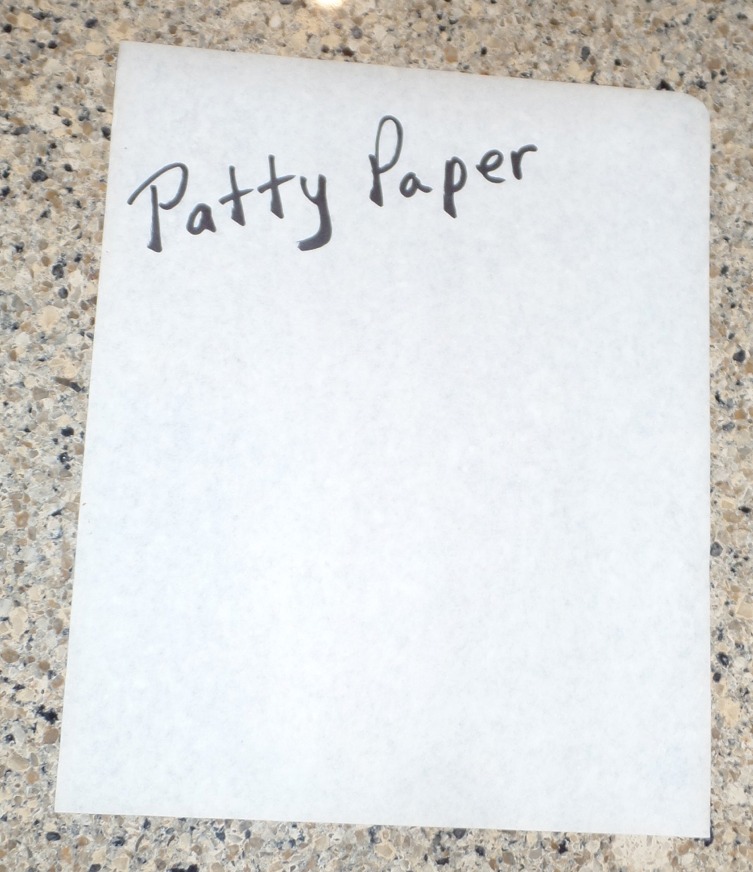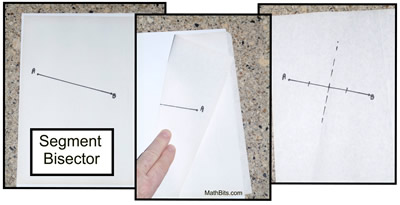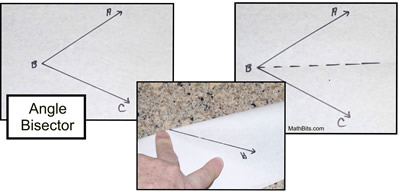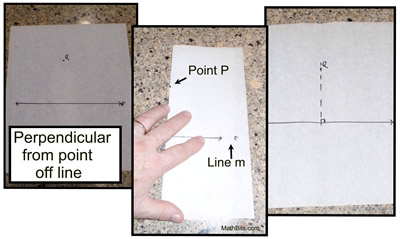|
We saw the MIRA use reflections to produce geometric constructions. In a similar fashion, the folding of semi-transparent paper can be used to create geometric constructions produced through reflections. The paper used for these constructions can be, for example, waxed paper, deli paper, or commercially prepared "Patty Paper" sold in rectangular sheets.
Reflections with Patty Paper |
Patty Paper is a semi-transparent dry waxed paper sold in rectangular sheets. If you write on one side of the paper, you will be able to see your writing through the back side of the paper, as well as see other images through the paper.
Patty Paper cannot be used for creating circles. |
 |
The constructions below are samples of constructions using Patty Paper.
Construct a bisector of a segment. |
Steps:
1) Using a straightedge, draw the line segment  on the Patty Paper. on the Patty Paper.
2) Fold the Patty Paper such that point A and point B coincide with one another.
3) Crease the paper along this fold.
4) Open the paper and using your straightedge, draw a line along the crease.
5) The crease line is the bisector of the segment. |
 Draw segment. Fold so endpoints coincide.
Draw segment. Fold so endpoints coincide.
Draw bisector on the fold line. |
Construct an angle bisector. |
Steps:
1) Using your straightedge, draw the angle ∠ABC on the Patty Paper.
2) Fold the Patty Paper such that the ray  coincides with the ray coincides with the ray  . .
3) Crease the paper along this fold.
4) Open the paper and using your straightedge, draw a line along the crease.
5) The crease line is the line of reflection which will be the bisector of the angle. |
 Draw angle. Fold so the rays of the angle coincide.
Draw angle. Fold so the rays of the angle coincide.
Draw bisector on the fold line.
|
Construct a perpendicular from a point not on a line. |
Steps:
1) Using your straightedge, draw line m and point P, not on the line, on the Patty Paper.
2) Fold the Patty Paper such that the two parts of line m will lie exactly on top of one another.
3) Position the paper such that point P will lie on this fold.
4) Crease the paper along this fold.
5) Open the paper and using your straightedge, draw a line along the crease.
6)The crease line is the line from P perpendicular to line m. |

Draw the line and a point not on the line.
Fold so the line will coincide with itself
and the fold will pass through point P.
Draw perpendicular on the fold line
.
|

NOTE: The re-posting of materials (in part or whole) from this site to the Internet
is copyright violation
and is not considered "fair use" for educators. Please read the "Terms of Use". |
|




